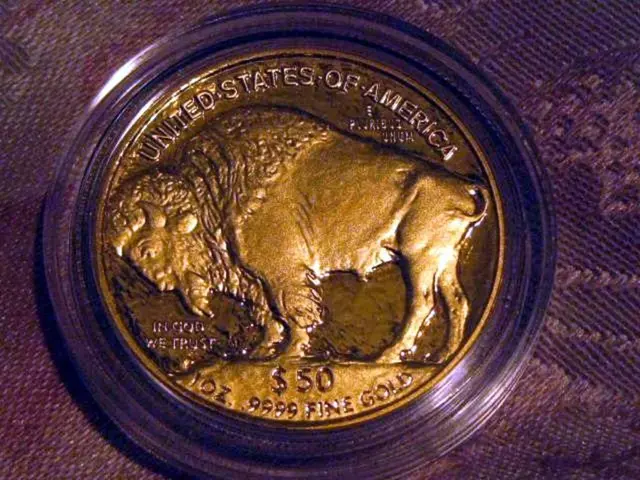Understanding the Symbolic: Assessing the Subtle Meanings in Abstract Artworks
Solve the riddle of abstract art with this informative guide! Abstract art, known for its unique forms and vibrant colors, can be bewildering at times. But don't fret, as this captivating write-up will provide a clear understanding of the mystery and charm of abstract art.
Discover the thrilling world of abstract art, where personal feelings and thoughts take center stage. Engage with art that welcomes your interpretation, creating an intriguing adventure for your eyes. Each piece tells a story, and it's not the same tale for everyone. Embrace this unique art form and delve into the fascinating world of emotions and creativity.
So, just what is abstract art?
Abstract art is a revolutionary means of expression, breaking free from traditional representation conventions. It focuses on color, shape, and form, rather than depicting objects or scenes from the real world. Understanding abstract art may pose a challenge, but the rewards are immense as it invites personal interpretation and emotional connection.
Here are some key characteristics of abstract art:
- Non-representational: Abstract art does not aim to represent reality directly.
- Emphasis on color: Color plays a significant role in conveying feelings and moods.
- Shapes and forms: Artists utilize geometric or organic shapes to create visual interest.
- Texture: Different textures can add depth and dimension to the artwork.
- Movement: The arrangement of elements can instill a sense of motion.
Each piece of abstract art presents a different story, with artists wanting viewers to feel rather than think.
Historical Background:
Abstract art emerged in the early 20th century, heralding a shift in how artists perceived their work. Traditional art centered on realism and representation, whereas abstract art called for new ways to express ideas.
Influential movements contributed to the rise of abstract art:
- Cubism: Pablo Picasso initiated this movement, fragmenting objects into geometric shapes.
- Futurism: Focused on speed, technology, and modernity.
- Expressionism: Emphasized the emotional experience over physical reality.
Abstract art gained prominence following World War II, with artists like Jackson Pollock and Mark Rothko making remarkable strides.
To this day, abstract art continues to progress, impacting various fields like design, architecture, and fashion. Grasping its history sheds light on its considerable influence on contemporary art.
The Importance of Interpretation:
The art of interpretation plays a crucial role in understanding abstract art. Every viewer brings their own experiences, feelings, and thoughts to the artwork. This personal lens shapes how one sees and comprehends a piece, making abstract art unique and personal.
Personal Connection:
Each person experiences life differently, influencing how they interpret abstract art. A viewer might sense joy, sadness, or confusion while gazing upon a piece. This emotional response is vital, as it connects the viewer to the artwork on a profound level.
Here are some reasons why personal connection matters:
- Emotional resonance: Art can evoke powerful feelings.
- Subjective experience: People see things distinctly.
- Memory triggers: Art can remind us of past events.
Imagine a chart linking emotions to colors in abstract art:
These connections help facilitate viewers' engagement with art, allowing them to find meaning in colors, shapes, and forms.
Cultural Perspectives:
Cultural backgrounds shape viewers' perspectives on art. Different cultures carry unique symbols and meanings, which influence interpretations. A piece of abstract art may hold different meanings in various cultures.
For example:
- Western Culture: Emphasizes individual expression and emotion.
- Eastern Culture: Focuses on harmony and balance.
Recognizing these perspectives aids in broadening the viewer's understanding of the art. Establishing connections with diverse cultures enriches the experience of abstract art and fosters fascinating discussions.
Techniques for Evaluation:
Evaluating abstract art can be an exciting yet challenging task. It requires numerous evaluation techniques to unearth deeper meanings behind the colors, shapes, and forms.
Visual Analysis:
Visual analysis deals with the artwork's formal elements. This includes examining the colors, shapes, lines, and textures to comprehend the artist's choices. Using visual analysis aids in building a clear image of the artwork, allowing for a better understanding of the artist's intentions.
Here are some key points to consider:
- Color: What colors dominate the piece? Do they evoke warmth or coolness?
- Shapes: Are the shapes geometric or organic? What do they suggest?
- Lines: Are the lines sharp or soft? Do they create movement or stability?
- Texture: Is the surface smooth or rough? How does it impact the overall feel?
Create a table to streamline your thoughts:
Utilizing visual analysis assists in forming a comprehensive understanding of the artwork, revealing the artist's intentions.
Emotional Response:
Emotional response refers to one's personal feelings evoked by the artwork. This response differs for each viewer, enriching the abstract art experience.
Consider the aspects below:
- Initial Reaction: What is your first emotion? Is it happiness, sadness, confusion?
- Connection: Does the piece remind you of a memory or experience?
- Impact: How does it linger in your mind? Does it inspire or provoke thought?
Reflect on your emotional response by recording your thoughts. Here's a simple emotional chart:
Examining your emotional reaction provides deeper insight into the art, creating a more profound and personal connection.
Common Misconceptions:
Evaluating abstract art can lead to confusion for many. Below are two common misconceptions about abstract art and why they are unfounded:
Complexity versus Simplicity:
One misconception is that abstract art is always intricate and hard to comprehend. This notion isn't accurate, as abstract art can be both complex and simple. Some pieces are elaborate and layered, while others are straightforward and minimalistic.
Consider the following:
- Complex art involves multiple colors, shapes, and textures.
- Simple art might use a single color or shape.
- Both forms can evoke strong emotions or thoughts.
To illustrate this further, consider the table below:
Recognizing that abstract art varies in complexity aids viewers in appreciating it better, focusing on emotions instead of the quantity of elements.
Subjectivity of Art:
Another widespread misconception is that there is a single correct way to interpret abstract art. Such an idea can restrict viewers' experience. Abstract art is highly subjective, allowing each viewer to express their thoughts and feelings.
Key points to consider:
- Personal experience shapes how viewers see and understand art.
- Emotions can guide interpretation.
- There is no definitive explanation for any artwork.
Consider these facts:
- A bold red canvas may remind one person of passion.
- Another may sense anger or frustration.
- Each interpretation is valid.
Art stimulates conversations, encouraging viewers to express their thoughts. Accepting subjectivity broadens the art community and opens new avenues for exploring abstract art.
Influential Abstract Artists:
Comprehending abstract art might feel challenging, but its charm lies in its freedom of expression. Renowned abstract artists have paved the way for new ideas and emotions, cementing their relevance today. These artists contribute to a rich and vibrant abstract art landscape, inviting viewers to experience emotions without clear subjects.
Pioneers of the Movement:
In the early 20th century, several artists broke away from traditional forms, pursuing new means of expression. They set the stage for the development of abstract art.
- Wassily Kandinsky: Dubbed the father of abstract art, Kandinsky believed colors had emotions. His works feature vibrant hues and dynamic forms.
- Piet Mondrian: Drawing inspiration from the De Stijl movement, Mondrian utilized geometric shapes and primary colors in his compositions. He emphasized harmony and balance in his work.
- Jackson Pollock: Pascal the Dripper is famed for his drip painting technique, using large canvases and pouring paint. His art reflects spontaneity and energy.
These artists revolutionized how we see and interpret art today, inspiring new generations of creators.
Contemporary Voices:
Abstract art continues to evolve, with contemporary artists pushing boundaries. These artists experiment with modern techniques and materials to express ideas, tackling current themes and emotions.
- Kara Walker: Her work challenges social norms through challenging silhouette forms. She delves into race, gender, and sexuality in her art.
- Mark Bradford: Known for his collages, Bradford combines painting and social issues in his work. His art is often political, addressing community issues and cultural identity.
- Julie Mehretu: Mehretu's works capture globalization and its impact through complex, dense compositions. She often layers maps, imagery, and patterns to create sprawling artworks.
Contemporary artists spark conversations about numerous topics, provoking thought and engagement.
Art Critique Frameworks:
Embracing abstract art requires a thoughtful approach, as personal interpretation plays a significant role in understanding the art. Art critique frameworks help evaluate abstract art, providing guidance in analyzing what we see and feel. Two primary frameworks include Formal Critique and Contextual Critique.
Formal Critique:
Formal Critique centers on the visual elements of the artwork. Examining the artwork's formal elements helps in understanding the artist's choices and creative process without considering the artwork's historical or cultural context. Consider the following elements when conducting a Formal Critique:
- Line: The paths created by moving points.
- Color: The hues used and their combinations.
- Shape: The forms created within the artwork.
- Texture: The surface quality and feel of the piece.
- Composition: The arrangement of elements in the artwork.
Contextual Critique:
Contextual Critique focuses on understanding the artwork's background, including the artist's biography, historical events, and cultural influences that shaped the artwork. Using a Contextual Critique approach aids in grasping the artwork's full significance and meaning. Some essential factors to consider include:
- Artist's intent: Why did the artist create this piece?
- Historical context: What events influenced the artwork?
- Cultural influences: How do culture and society shape the art?
By blending these insights with your visual observations, you gain a broader understanding of the artwork, shedding light on its emotional resonance and significance.
Conclusion:
Dive into the captivating realm of abstract art and unleash the power of visual expression. Your personal perspective makes abstract art a unique experience with no right or wrong answers. Engage with these enigmatic pieces and let your emotions guide you on a fascinating journey. Enrich your understanding and appreciation of abstract art as you explore its vibrant layers.
Engage with the intriguing world of abstract art that blends science (colors, shapes, and forms) with lifestyle (personal feelings and interpretations). Leverage technology to deepen your exploration by learning about influential artists and movements in its historical background. Be entertained by the endless conversations that this art form inspires, shedding light on diverse cultural perspectives. Embrace the thrill of abstract art and dive into the fascinating fusion of emotions, creativity, and personal connections that it offers.








